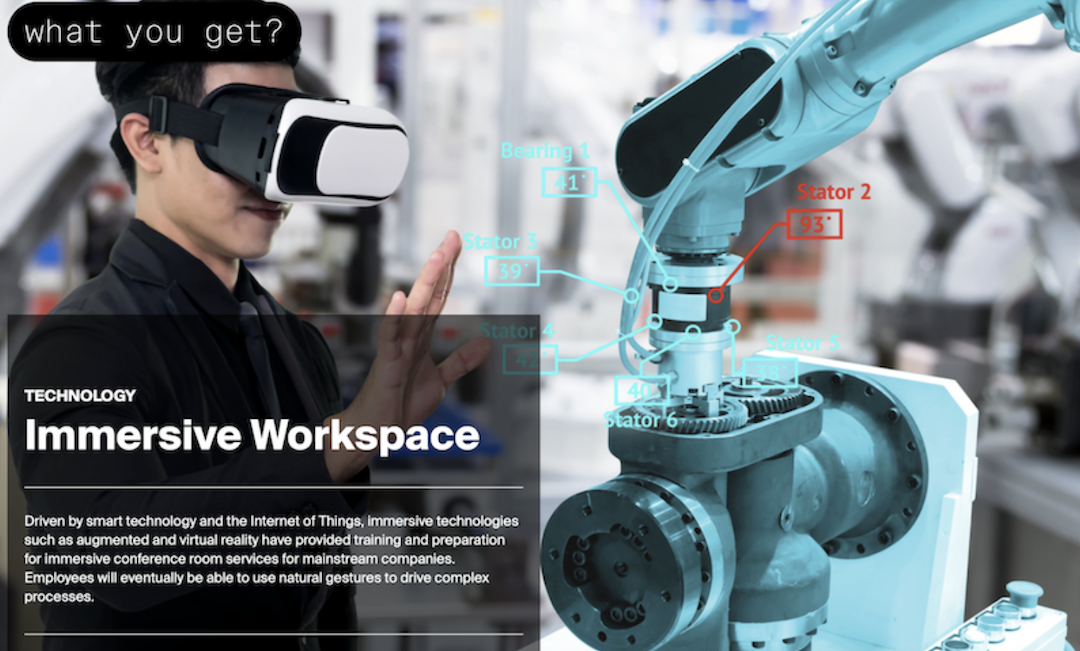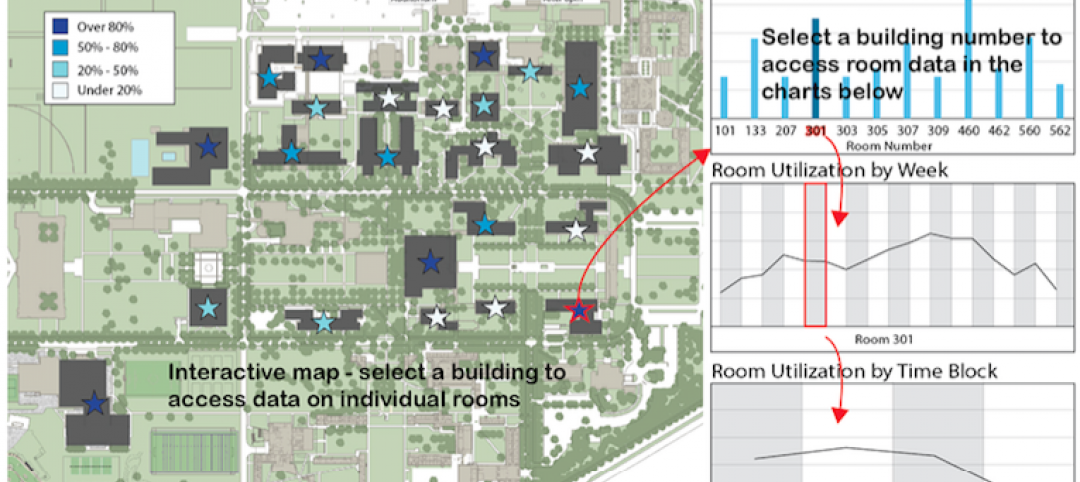Investing in new technologies is always a risk, given the high failure rate of startups and the speed at which even newer technology emerges. This is particularly true of Construction Technology, with literally thousands of products and processes that are applicable to the built environment, and into which more than $1.3 billion in investment capital was poured last year, a 56% increase over 2019, according to CB Insights’ estimates.
How does a buyer determine what will work best for its business, even with technology that has a performance track record?
To sort through the clutter, the Massachusetts Institute of Technology’s Real Estate Innovation Lab (REIL), working with JLL, one of the Lab’s founding partners, has launched Tech Tracker (techtracker.mit.edu), a free online webtool that scouts, analyzes, and predicts the future of technology within the built environment. The tool’s value to the real estate community is its insight into which technology might have the greatest potential impact on the development, management, and configuring of property and space.
MIT has been trying to track ConTech for eight years, the last two-and-a-half years with JLL, which provided a better understanding of what questions about technology real estate professionals need answers to.
“With the pace of innovation, it’s critical to understand what technologies will be coming and their potential impact in the future,” says Ben Breslau, JLL’s Global Chief Research Officer. “For the first time ever, there’s a single place where we can research and understand the pipeline of technologies from inception to the market. This tool allows us to think through the implications on our ability to meet net-zero carbon targets, create dynamic hybrid workplaces, and improve the resilience of our buildings.”
MIT has created a database of more than 200 sources to inform a catalog of technologies impacting the built environment that Tech Tracker users can search, sort, and organize. According to REIL’s website as of Tech Tracker’s September 8th launch date, the tool has a data framework for 257 of 856 ConTech technologies identified. “What we’re tracking is heavy on those [technologies] in lab space,” says Dr. Andrea Chegut, Director of MIT’s REIL, whom BD+C spoke with this morning.
Within this catalog, MIT profiles each technology tracked to detail its overall concept as well as analytics such as impact factors and big data. Profiles of products and processes are sorted into five categories: automation, sustainability, hybrid work, data analysis, and health and well-being. Hypercells—shape-shifting robotics cubes that can morph into elastic skins—would be one example of automation technology. Photovoltaic facades would fall under sustainability, and self-cleaning materials under health and well-being.
“We wanted to break through the noise and hype to analyze the path of technologies—from when they’re a kernel of an idea in an inventor’s brain to when they’re common place in the real estate marketplace,” explains Dr. Chegut. “The Tech Tracker [replaces] gut feelings about what’s ‘hot’ with actual data and machine-learning algorithms. It takes the mystery out of change and simplifies the ever-changing world of technology within the built environment.”
GAUGING TECH’S ‘AWARENESS’
She fashions Tech Tracker as a “knowledge graph” that’s more than an aggregator of information. Tech Tracker assigns rankings to technologies being tracked, based their relative development trajectories and awareness among various industry groups such as analysts or prospective users. As this tracking is conducted in real time, those rankings are subject to change.
At the moment, Tech Tracker ranks 5G first among all technologies, strategies, stages, and momentum. But that technology is actually “cooling down,” meaning that “you should have heard of it already,” explains Dr. Chegut. Conversely, the Internet of Things, Graphene, and Augmented Reality, the third-, fourth-, and fifth-ranked technologies, are “rising fast,” meaning that they’re gaining awareness, based on MIT’s research.
Other technologies within Tech Tracker’s top 10 include virtual reality, photogrammetry, connected home, aramid fibers, exoskeleton, and carbon nanotubes. Smart robotics, which ranks 11th, is “keeping pace.”
TAKING THE LONG VIEW
Getting technology into usable shape for a market that’s ready for it takes time: MIT estimates that it takes an average of 11 years for a tech product or process to go from the lab or inception to research and development; another 7.3 years, on average, from R&D to market; and 21.3 years from market introduction to market standards. A technology’s different stages “aren’t always linear,” either, says Dr. Chegut.
One of Tech Tracker’s filters gauges a product’s awareness via social media, academic theses, and venture capital funding. This awareness quotient is a measure of a technology’s activities or milestones reached, as chronicled by six information platforms: Google News, Twitter, Crunchbase, Google Patent, Google Citation, and MIT Dspace. Dr. Chegut says that as Tech Tracker evolves to find nascent technologies that could impact the built environment, it will naturally expand its information sources.
“So many people come up to me and say this or that technology is a fad,” says Dr. Chegut. “Tech Tracker allows us to start to get a handle on the industry’s R&D.” MIT’s aspiration, she adds, is for real estate professionals to eventually incorporate Tech Tracker into every project proposal they send out, and to use the tool “to be strategic and to look a little bit more longer term.”
Related Stories
AEC Tech | Aug 25, 2017
Software cornucopia: Jacksonville Jaguars’ new practice facility showcases the power of computational design
The project team employed Revit, Rhino, Grasshopper, Kangaroo, and a host of other software applications to design and build this uber-complex sports and entertainment facility.
AEC Tech | Aug 24, 2017
Big Data helps space optimization, but barriers remain
Space optimization is a big issue on many university campuses, as schools face increasing financial constraints, writes Hanbury’s Jimmy Stevens.
Lighting | Aug 2, 2017
Dynamic white lighting mimics daylighting
By varying an LED luminaire’s color temperature, it is possible to mimic daylighting, to some extent, and the natural circadian rhythms that accompany it, writes DLR Group’s Sean Avery.
Office Buildings | Jul 20, 2017
SGA uses virtual design and construction technology to redevelop N.Y. building into modern offices
287 Park Avenue South is a nine-story Classical Revival building previously known as the United Charities Building.
Accelerate Live! | Jul 6, 2017
Watch all 20 Accelerate Live! talks on demand
BD+C’s inaugural AEC innovation conference, Accelerate Live! (May 11, Chicago), featured talks on machine learning, AI, gaming in construction, maker culture, and health-generating buildings.
| Jun 13, 2017
Accelerate Live! talk: Is the road to the future the path of least resistance? Sasha Reed, Bluebeam (sponsored)
Bluebeam’s Sasha Reed discusses why AEC leaders should give their teams permission to responsibly break things and create ecosystems of people, process, and technology.
| Jun 13, 2017
Accelerate Live! talk: 3D laser scanning for the project lifecycle, FARO Technologies (sponsored)
Brent Slawnikowski of FARO Technologies and Jennifer Suerth of Pepper Construction discuss how implementation of laser scanning has helped Pepper become more successful in the completion of their projects.
| Jun 13, 2017
Accelerate Live! talk: Incubating innovation through R&D and product development, Jonatan Schumacher, Thornton Tomasetti
Thornton Tomasetti’s Jonatan Schumacher presents the firm’s business model for developing, incubating, and delivering cutting-edge tools and solutions for the firm, and the greater AEC market.
| Jun 13, 2017
Accelerate Live! talk: The future of computational design, Ben Juckes, Yazdani Studio of CannonDesign
Yazdani’s Ben Juckes discusses the firm’s tech-centric culture, where scripting has become an every-project occurrence and each designer regularly works with computational tools as part of their basic toolset.
| Jun 13, 2017
Accelerate Live! talk: A case for Big Data in construction, Graham Cranston, Simpson Gumpertz & Heger
Graham Cranston shares SGH’s efforts to take hold of its project data using mathematical optimization techniques and information-rich interactive visual graphics.












